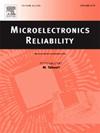Dependence between drain current saturation level and short-circuit robustness of p-GaN HEMTs
IF 1.9
4区 工程技术
Q3 ENGINEERING, ELECTRICAL & ELECTRONIC
引用次数: 0
Abstract
This work presents an experimental investigation of drain current saturation (ID−SAT) effect on short-circuit (SC) robustness of 650 V normally-off gallium nitride (GaN) high electron mobility transistors (HEMTs). SC tests were performed at a drain-source voltage (VDS) of 400 V, varying parameters such as gate resistance (RG), on-state gate-source voltage (VGS), and parasitic source inductance (LS) on the device under test (DUT). As expected, variation on maximum of ID−SAT (ID−SAT−max) was observed by varying these parameters. In single shot destructive SCs, components demonstrated a very high robustness, withstanding SC durations of hundreds of microseconds. However, in repetitive SCs of very short durations, components proved extremely fragile, failing after only a few SC cycles, sometimes as few as two cycles. Results suggest that in repetitive SCs, the failure appears to result from a critical dissipated energy (ESC) being exceeded depending on several parameters. This critical ESC value also seems to depend on SC pulse width (tp). In one-shot destructive SCs, the cause of failure remains unclear, as no critical ESC or ID−SAT−max threshold was observed. However, it is important to note that, in destructive SCs, a correlation between ID−SAT−max and SC withstanding time (SCWT) has been identified.
p-GaN hemt漏极电流饱和水平与短路稳健性的关系
本文研究了漏极电流饱和(ID−SAT)对650 V常关氮化镓(GaN)高电子迁移率晶体管(hemt)短路(SC)稳健性的影响。SC测试在400 V的漏源电压(VDS)下进行,改变被测器件(DUT)上的栅极电阻(RG)、导通状态栅极源电压(VGS)和寄生源电感(LS)等参数。正如预期的那样,通过改变这些参数可以观察到ID - SAT (ID - SAT - max)最大值的变化。在单发破坏性SC中,组件表现出非常高的鲁棒性,可以承受数百微秒的SC持续时间。然而,在持续时间很短的重复SC中,组件被证明非常脆弱,仅在几个SC循环后就失效了,有时只有两个循环。结果表明,在重复的SCs中,失败似乎是由于超过了关键耗散能量(ESC),这取决于几个参数。这个临界ESC值似乎也取决于SC脉冲宽度(tp)。在一次性破坏性SCs中,失败的原因尚不清楚,因为没有观察到关键的ESC或ID - SAT - max阈值。然而,值得注意的是,在破坏性SC中,已经确定了ID - SAT - max与SC耐受时间(SCWT)之间的相关性。
本文章由计算机程序翻译,如有差异,请以英文原文为准。
求助全文
约1分钟内获得全文
求助全文
来源期刊

Microelectronics Reliability
工程技术-工程:电子与电气
CiteScore
3.30
自引率
12.50%
发文量
342
审稿时长
68 days
期刊介绍:
Microelectronics Reliability, is dedicated to disseminating the latest research results and related information on the reliability of microelectronic devices, circuits and systems, from materials, process and manufacturing, to design, testing and operation. The coverage of the journal includes the following topics: measurement, understanding and analysis; evaluation and prediction; modelling and simulation; methodologies and mitigation. Papers which combine reliability with other important areas of microelectronics engineering, such as design, fabrication, integration, testing, and field operation will also be welcome, and practical papers reporting case studies in the field and specific application domains are particularly encouraged.
Most accepted papers will be published as Research Papers, describing significant advances and completed work. Papers reviewing important developing topics of general interest may be accepted for publication as Review Papers. Urgent communications of a more preliminary nature and short reports on completed practical work of current interest may be considered for publication as Research Notes. All contributions are subject to peer review by leading experts in the field.
 求助内容:
求助内容: 应助结果提醒方式:
应助结果提醒方式:


